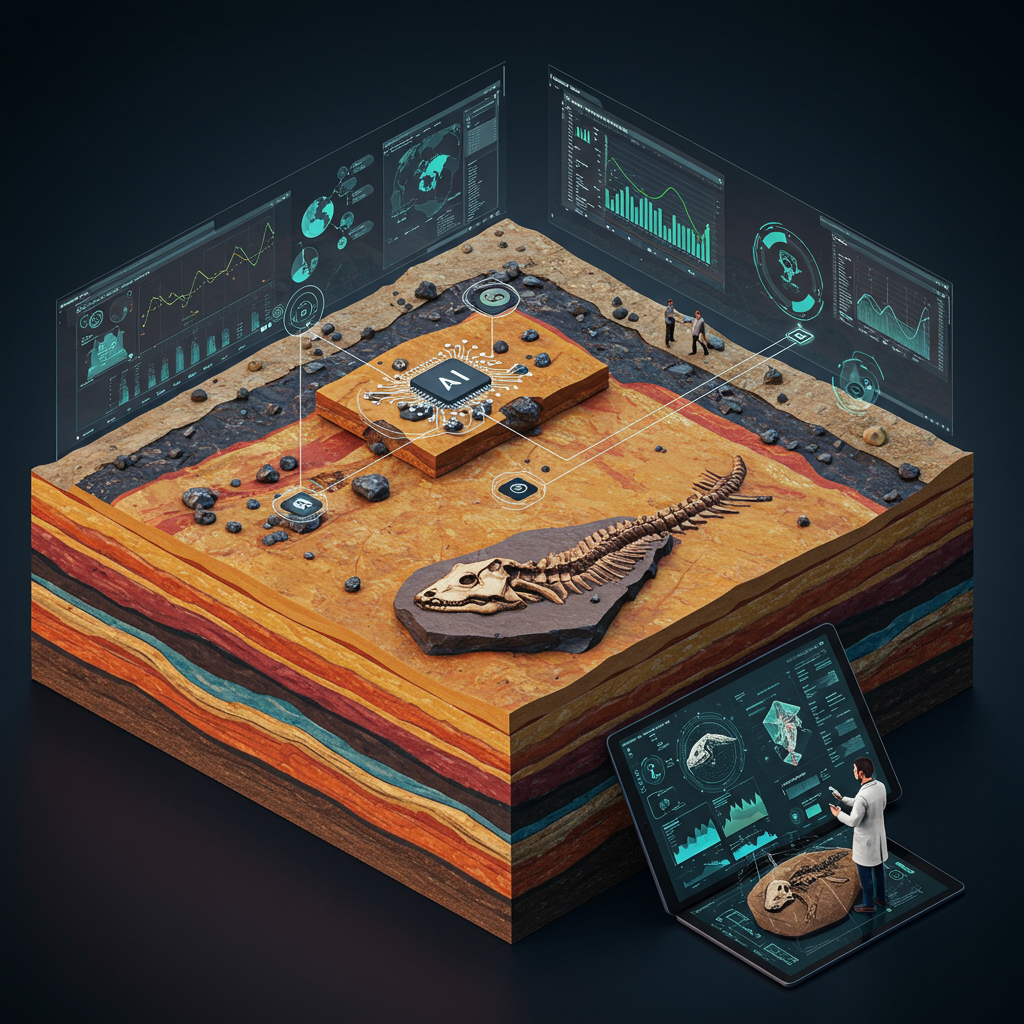
AI is making significant inroads into sedimentology, offering powerful new ways to analyze sedimentary rocks, processes, and environments. Sedimentologists study the origin, transport, deposition, and diagenesis of sediments, which are crucial for understanding Earth's history, past climates, and for locating resources like hydrocarbons, water, and minerals.
Here's how AI is being applied in sedimentology:
-
Automated Facies Classification and Prediction:
-
From Well Logs: AI algorithms (e.g., Support Vector Machines, Random Forests, Neural Networks) can be trained on well log data (gamma ray, neutron porosity, density, resistivity, sonic) and core-calibrated facies labels to automatically classify sedimentary facies in uncored intervals or entire wells. This is much faster and more consistent than manual interpretation.
-
From Core Images/Outcrop Photos: Computer vision and deep learning (e.g., Convolutional Neural Networks - CNNs) can analyze images of cores or outcrops to identify and classify lithofacies, sedimentary structures, and even grain size distributions.
-
From Seismic Data: AI can help interpret seismic attributes to predict the distribution of sedimentary facies and geobodies (e.g., channels, fans, reefs) in the subsurface.
-
-
Sedimentary Feature Recognition and Quantification:
-
Automated Structure Identification: CNNs can detect and classify sedimentary structures (e.g., cross-bedding, lamination, bioturbation, ripples) in core photos, thin sections, or borehole image logs (like FMI/FMS).
-
Grain Size and Shape Analysis: AI can analyze photomicrographs or images of disaggregated sediments to automatically measure grain size, sorting, roundness, and sphericity, providing quantitative data rapidly.
-
Pore Network Characterization: From micro-CT scans of rock samples, AI can segment pore spaces, analyze pore geometry, and predict properties like porosity and permeability. This is a key part of Digital Rock Physics (DRP).
-
-
Stratigraphic Interpretation and Correlation:
-
Sequence Stratigraphy: AI can help identify sequence boundaries, flooding surfaces, and parasequences from well log patterns or seismic data, aiding in the construction of sequence stratigraphic frameworks.
-
Automated Well Correlation: Algorithms can assist in correlating stratigraphic markers and facies zones between multiple wells, improving the consistency and speed of building subsurface models.
-
-
Paleoenvironmental Reconstruction:
-
By integrating various data types (facies, fossil content, ichnology, geochemical data), AI models can help infer past depositional environments more robustly and identify subtle environmental shifts.
-
-
Provenance Studies:
-
AI can analyze large datasets of detrital mineral geochemistry (e.g., from zircon, apatite) or heavy mineral assemblages to classify sediment sources and reconstruct sediment dispersal pathways.
-
-
Diagenesis Analysis:
-
AI can be used to identify and quantify diagenetic features (e.g., cement types, dissolution pores, compaction features) from thin section images or SEM imagery, helping to understand post-depositional alterations.
-
-
Automated Core Logging:
-
AI tools are being developed to assist in or fully automate the description of drill cores, analyzing images and potentially hyperspectral data to determine lithology, texture, structures, and mineralogy.
-
AI Techniques Commonly Used:
-
Supervised Learning: For classification (facies, structures) and regression (porosity, permeability).
-
Unsupervised Learning: For clustering data to find natural groupings (e.g., identifying distinct chemofacies or petrofacies).
-
Deep Learning (especially CNNs): Highly effective for image-based tasks (core photos, thin sections, seismic images).
-
Computer Vision: The broader field that enables computers to "see" and interpret images.
Benefits in Sedimentology:
-
Objectivity and Consistency: Reduces human bias in interpretations (e.g., facies logging).
-
Speed and Efficiency: Automates time-consuming tasks like core description or feature quantification.
-
Quantitative Data: Enables the extraction of more quantitative data from traditionally qualitative descriptions.
-
Handling Large Datasets: Efficiently processes the vast amounts of data from modern well logging, core scanning, and seismic surveys.
-
Discovering Hidden Patterns: AI can identify complex relationships in multi-parameter datasets that might be missed by human interpreters.
Challenges:
-
Data Availability and Quality: High-quality, well-labeled datasets (e.g., core descriptions linked to logs and images) are essential for training robust AI models, and these can be scarce or proprietary.
-
"Black Box" Nature: Understanding why a deep learning model makes a certain prediction can be challenging.
-
Geological Variability: Sedimentary systems are inherently complex and variable; models trained in one basin or on one type of depositional system may not generalize well to others without retraining.
-
Integration of Domain Knowledge: AI models are tools; sedimentological expertise is crucial for framing problems, validating results, and interpreting the geological significance of AI outputs.
AI is poised to become an indispensable tool for sedimentologists, augmenting their abilities to interpret sedimentary records, understand Earth processes, and explore for natural resources more effectively.

- Teacher: A S